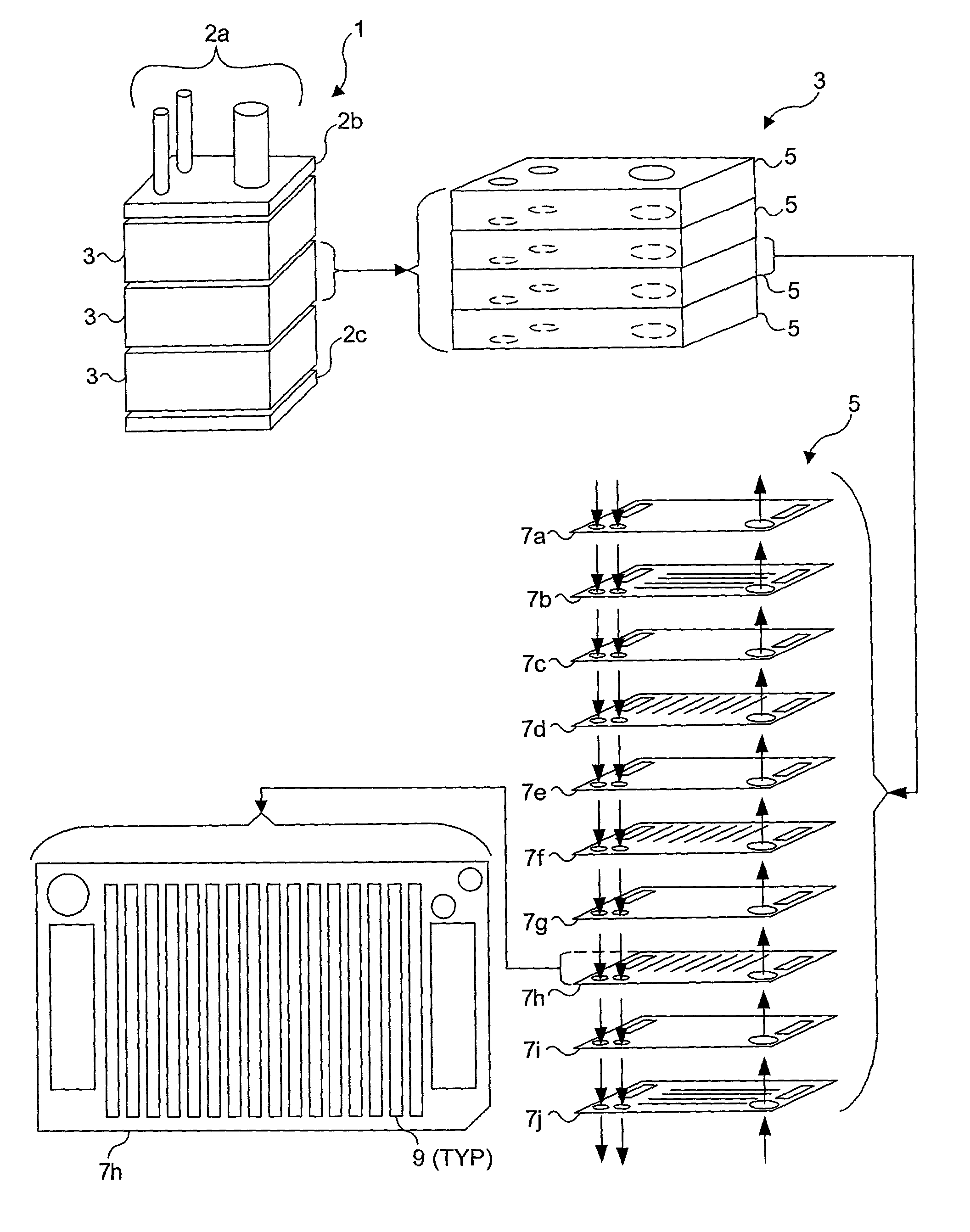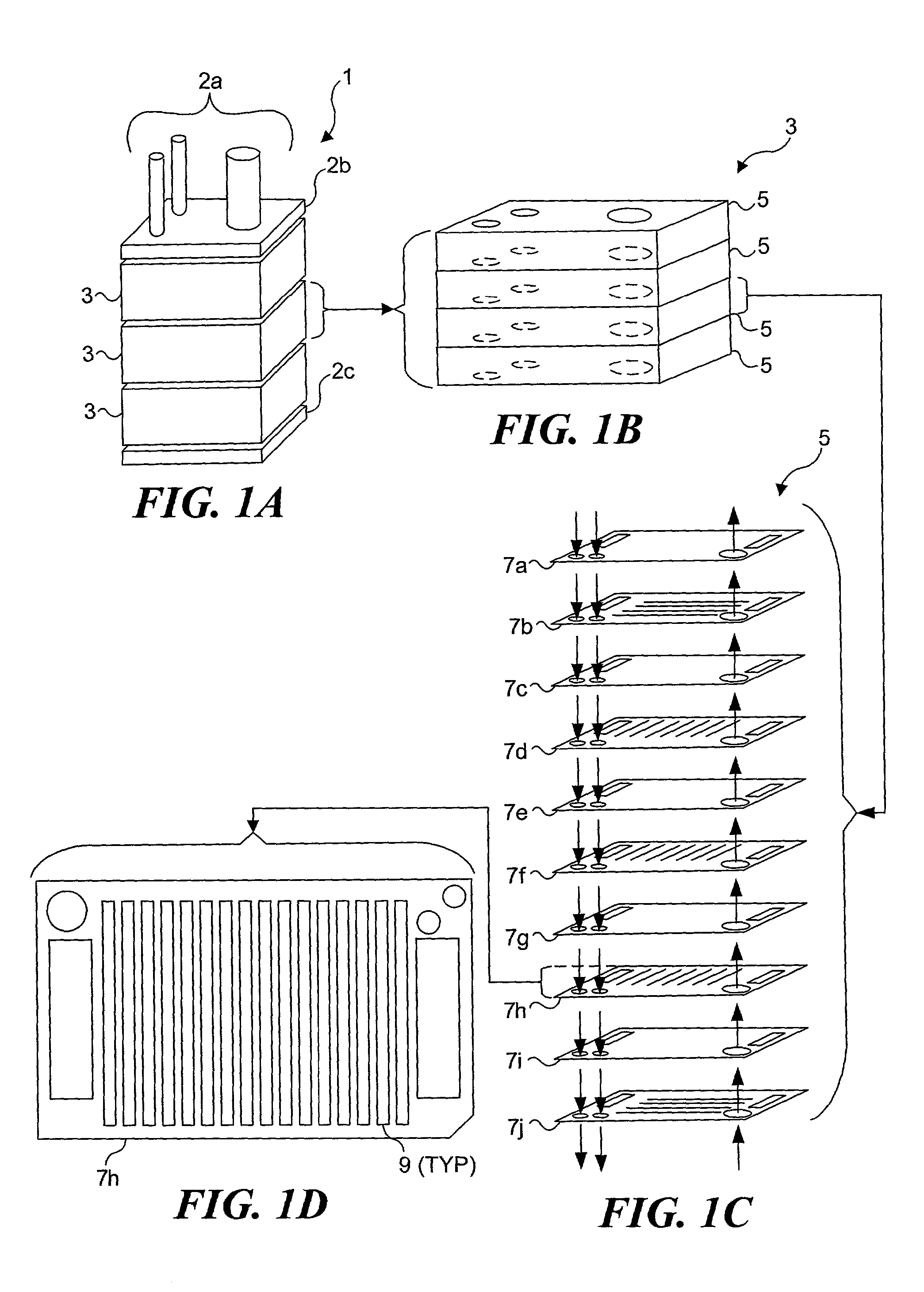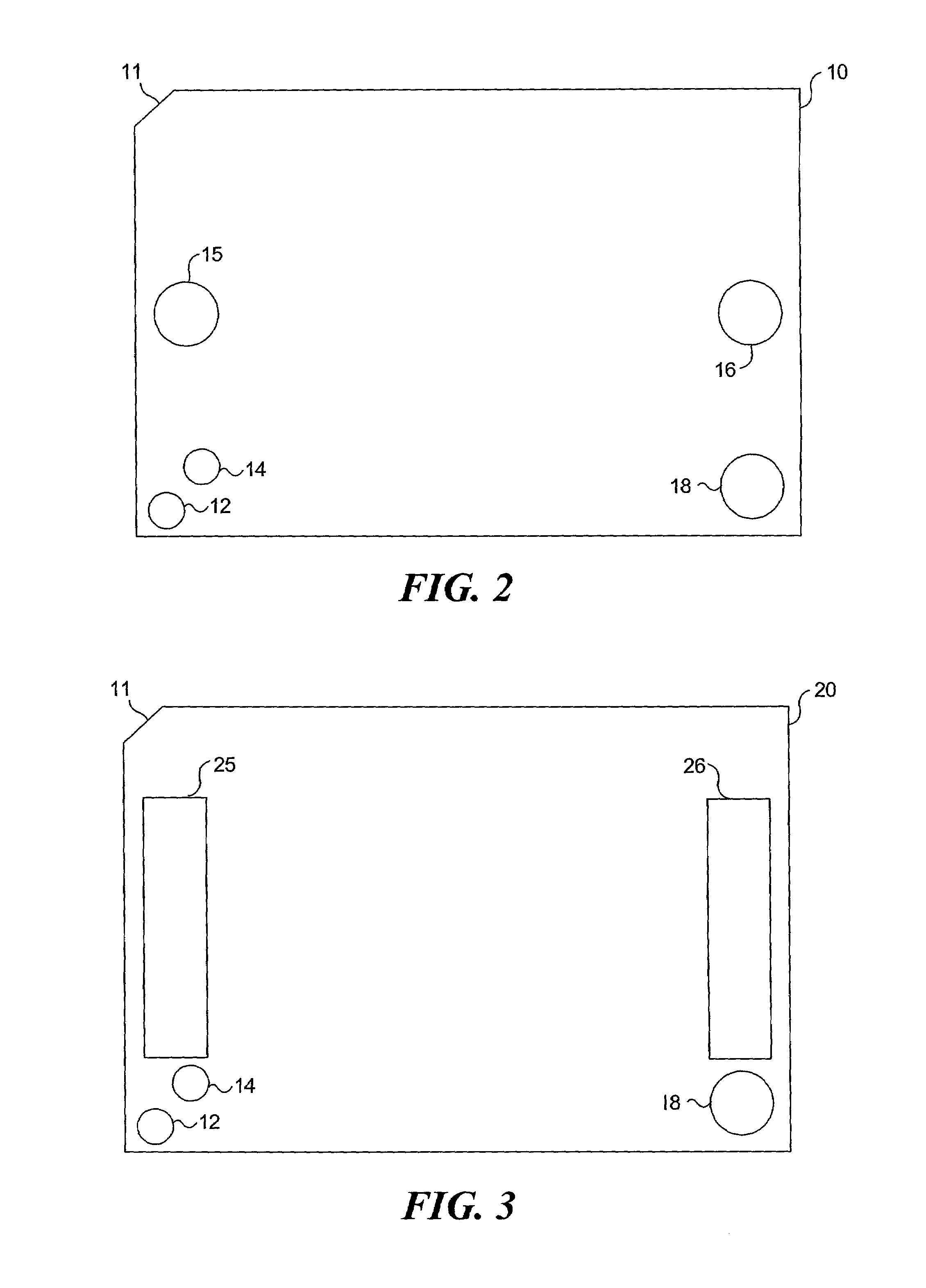Enhancing fluid flow in a stacked plate microreactor
a microreactor and stacked plate technology, applied in the direction of liquid-gas reaction of thin-film type, stationary plate conduit assembly, mixer, etc., can solve the problems of affecting the quality and yield of the desired product, the scaling up process from the laboratory to industrial-scale, and the difficulty of control, so as to achieve the effect of sufficient residence time and maximum control of reaction temperatur
- Summary
- Abstract
- Description
- Claims
- Application Information
AI Technical Summary
Benefits of technology
Problems solved by technology
Method used
Image
Examples
Embodiment Construction
Overview
[0116]The present invention relates to internal parallelization in stacked plate reactors employed to produce a chemical product. The term internal parallelization, as applied both to this disclosure and to the claims that follow, should be understood to mean simultaneously addressing a plurality of substantially identical micro-scale processing elements using only a single fluid inlet and a single fluid outlet for each fluid type (i.e., reactant, product, and heat transfer media). These processing elements can include micro-reactor units, fluid processing channels (i.e., channels utilized for thermal treatment and reactant mixing; but not fluid channels utilized for reactant distribution and product collection), heat exchangers and workup units. Workup units (i.e., post processing units) can be employed for quenching a reaction, purification of a product (such as by extraction, distillation, filtration, phase separation, crystallization, or adsorption), and / or for providing...
PUM
 Login to View More
Login to View More Abstract
Description
Claims
Application Information
 Login to View More
Login to View More - R&D
- Intellectual Property
- Life Sciences
- Materials
- Tech Scout
- Unparalleled Data Quality
- Higher Quality Content
- 60% Fewer Hallucinations
Browse by: Latest US Patents, China's latest patents, Technical Efficacy Thesaurus, Application Domain, Technology Topic, Popular Technical Reports.
© 2025 PatSnap. All rights reserved.Legal|Privacy policy|Modern Slavery Act Transparency Statement|Sitemap|About US| Contact US: help@patsnap.com



